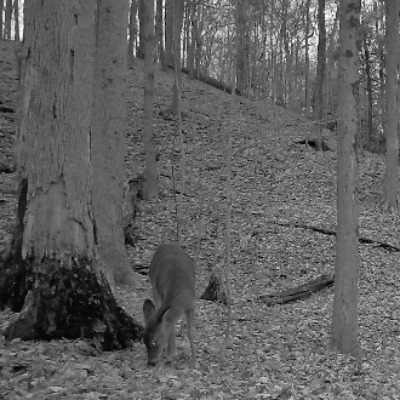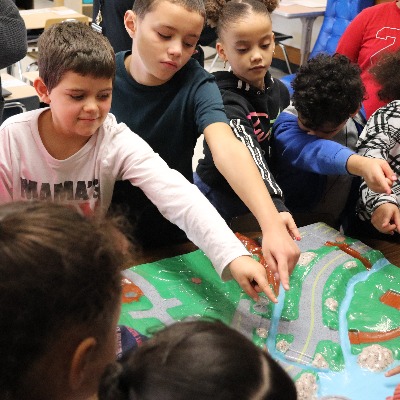Polar Vortex
Week of December 14, 2025 – December 20, 2025 by Lizzy Suzedell, Environmental Educator Have you heard about the polar vortex on the news lately? This week, I saw article titles saying that the “polar vortex has broken,” and that this will bring a “wrecking ball” and “mother lode” of “icy vortex air” across the country. While this weather phenomenon does bring us extremely cold temperatures, I always laugh a little [...]
Plans Change, but Memories are Made
Week of December 7, 2025 – December 13, 2025 by Katie McLaughlin, Environmental Educator Did you know that there is an old Christmas tree farm at Baltimore Woods? Originally planted in the early 1980s, this area has grown to astounding heights. It is located near the northern side of the boundary trail; you can spot an evergreen stand that looks a little odd. Within this area is a plethora of Abus [...]
Discovering Wildlife Through Trail Cameras
Week of November 30, 2025 – December 6, 2025 by Kaylen Iorio, Environmental Educator As I have been preparing for the Discovering Wildlife Through Trail Cameras program here at Baltimore Woods I’ve been able to take the time to reflect on why I am so drawn to this type of technology. Anyone who knows me knows I am not tech savvy in the slightest. Computer systems? Confusing. Smartphones and all their gadgets? Nonsense. [...]
Save the Rain
Week of November 23, 2025 – November 29, 2025 by Anna Stunkel, Environmental Educator Onondaga Lake is one of my favorite local areas to go birding. During spring and fall, you can find a colorful variety of ducks on the water. In winter, I have counted almost 100 Bald Eagles there at one time. It is teeming with life, but it hasn’t always been this way. Factories once dumped waste into [...]
Hail, Sleet & Graupel
Week of November 16, 2025 – November 22, 2025 by Elizabeth Suzedell, Environmental Educator As we continue to get further into November, we’re seeing more and more signs that winter is on the way. Most of the trees have dropped their leaves, squirrels are busily collecting the last of this year’s nuts, and the birds are starting to visit the feeders more frequently. We’ve been waking up to more frosty mornings, [...]
Bridging the Gap
Week of November 9, 2025 – November 15, 2025 by Katie McLaughlin, Environmental Educator As we headed out with their class this field trip season, a teacher told me “I will give you a lifetime of after-school detention if we find a snake on this field trip.” Now, she happened to be someone I have known for the last 27 years, so I will give her a pass… Especially after actually [...]
The Best Part of the Job
Week of November 2, 2025 – November 8, 2025 by Kaylen Iorio, Environmental Educator As an environmental educator much of my time is spent outside, whether that is guiding school groups through different ecosystems or even maneuvering through each of the 14 trails with public program participants like we did two Saturdays ago! Each day spent outside brings new experiences and being able to share them with others who are overjoyed [...]
Sit Spots
Week of October 26, 2025 – November 1, 2025 by Anna Stunkel, Environmental Educator Have you ever found a spot in nature where you like to sit for a while and observe your surroundings? Maybe you take a rest on a fallen log or rock, sitting still until small flocks of feeding birds approach as if you’re part of the surrounding trees. Or perhaps you stop by the shore of a [...]
Boogie-Woogie Aphids
Week of October 19, 2025 – October 25, 2025 by Elizabeth Suzedell, Environmental Educator There’s a white tree branch off of the Boundary Trail that I’ve pointed out to many students on field trips for the past few weeks. When I ask them what they think is going on with the branch, they ask, “Is it snow?” I tell them we haven’t had snow yet, and upon closer inspection, they see [...]










